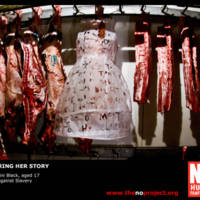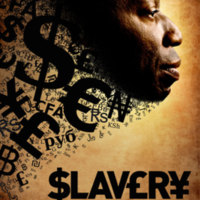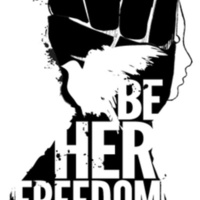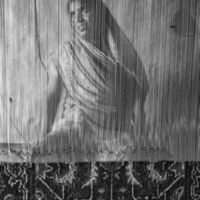Collection
Theme
Date
Type

Wearing Her Story
In contrast to the trope that brands individuals’ experiences onto their backs, the No Project released a poster in 2012 titled “Wearing Her Story,” made by the artist Ismini Black. A woman’s dress hangs alongside carcasses in a butcher’s window. There are letters cut out of the dress and…

Woman to Go
One major trope in 19th-century antislavery visual culture was the auction block, which featured in the Liberator masthead from 1831 to 1865 as a scene with crowds of onlookers. In 21st-century antislavery imagery, the auction block is back. In 2010, the Task Force on Human Trafficking opened an…

The Bakhita Initiative
The image promotes the work of the Bakhita Initiative which is the Roman Catholic Church in England's response to the issue of contemporary human trafficking. The key stakeholders of the Bakhita Foundation are the Catholic Bishops' Conference of England and Wales, Caritas Westminster, and the…

Slavery Not A Thing of the Past
Antislavery International commissioned poster. By foregrounding international currency symbols the image draws attention to the relationship between slavery and capitalism.

Be Her Freedom
The Be Her Freedom campaign is part pf the A21 movement which comprises of individuals, organizations, government officials, and members of the public who are committed to abolishing injustice in the 21st century. The image replaces the shackled pleading hands of past antislavery campaigns with a…

Modern Slavery, Indian Weaver
This image depicts 'Jadawati, a weaver, she is working on a 24 feet carpet which will take her nearly 40 days to complete. As a bonded labourer, she is paid 60 rupees a day, a rate nearly half the minimum wages entitled to her as per the law. The carpet that might sell for 25,000 rupees or more will…

Children Can't Stop It But You Can... Stop Child Labour
Campaign by the United Nations to bring an end to child labour. The hand-prints reaching out gesture towards the absent child and in doing so resists a common trope within humanitarian campaigns - relying on images of the suffering child to evoke sympathy.